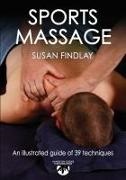Read more
List of contents
Part I: Getting Started With Sports MassageChapter 1: Introduction to Sports Massage What Is Sports Massage?
Who Should Be Treated?
How Does Sports Massage Work?
Where Can Sports Massage Take Place?
When Should Sports Massage Take Place?
Benefits of Sports Massage
Closing Remarks
Quick Questions
Chapter 2: Contraindications for Sports Massage Contraindications
Pathology
Closing Remarks
Quick Questions
Chapter 3: Preparing for Sports Massage Venue
Equipment
Hygiene
Client Positioning
Safety
Closing Remarks
Quick Questions
Part II: Sports Massage Techniques Chapter 4: Body Mechanics Massage Couch Height
Working Posture
Principles of Application
Closing Remarks
Quick Questions
Chapter 5: Massage Techniques Components of a Massage Stroke
Effleurage
Petrissage
Compression
Deep Strokes
Vibration
Tapotement
Friction
Closing Remarks
Quick Questions
Part III: Applying Sports MassageChapter 6: Sports Massage for Prone Positions Neck
Shoulder
Torso
Pelvis
Leg
Foot
Sitting
Quick Questions
Chapter 7: Sports Massage for Supine Positions Neck
Chest
Shoulder and Arm
Torso and Abdominal Muscles
Pelvis
Thigh
Leg
Foot
Quick Questions
Chapter 8: Sports Massage for Side-Lying Positions Neck
Shoulder and Arm
Torso
Pelvis
Thigh
Quick Questions
Part IV: Sports Massage Programmes and ManagementChapter 9: Client Assessment Subjective Assessment
Objective Assessment
Interpretive Stage
Closing Remarks
Quick Questions
Chapter 10: Event Massage Pre-Event Massage
Inter-Event Massage
Post-Event Massage
Working With an Elite Sport Team
Organising an Event
Closing Remarks
Quick Questions
Chapter 11: Special Populations Spinal Cord Injuries
Limb Deficiency
Cerebral Palsy
Visual Impairment
Communication
Closing Remarks
Quick Questions
About the author
Susan Findlay, BSc RGN, Dip SRMT, is director of the North London School of Sports Massage, where she is a sport and remedial massage therapist and lecturer.
Findlay's experiences as a ballet dancer, gymnast, personal trainer, and nurse have allowed her to develop both an applied and a clinical understanding of human movement, physical activity, anatomy, and physiology.
Findlay is the co-founder of the Institute of Sport and Remedial Massage. She also serves as chair of communications on the General Council of Massage Therapies and as an educational advisor to the Sport Massage Association.
In her free time, Findlay enjoys motorbiking, cycling, and yoga.
Summary
Sports Massage provides an in-depth discussion of applications of foundational massage techniques within a sports massage approach.

